Bioinformatics, Phylogeny and Evolutionary Genomics Group
Members
Maîtresse de conférences
UCBL
Tel: 04 72 44 84 87

Professeure des universités
UCBL
Tel: 33 04 26 23 44 76
Doctorante
UCBL
Enseignant-chercheur CPJ
UCBL

Directeur de recherche
CNRS
Tel: 33 04 72 44 62 97
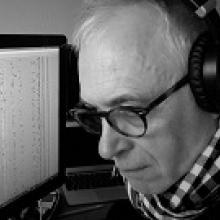
Professeur d'université émérite
UCBL
Tel: 04 72 44 85 60
Ingénieur d'études CDD
CNRS
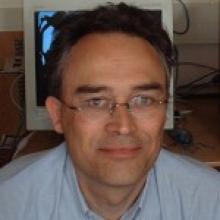
Directeur de recherche
CNRS
Tel: 33 04 72 43 11 67

Maîtresse de conférences
UCBL
Tel: 33 04 72 43 29 18
Doctorante
UCBL

Chargée de recherche
CNRS
Tel: 33 04 72 44 85 60
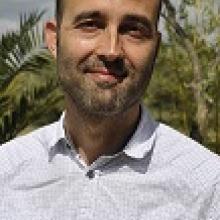
Directeur de recherche
CNRS
Tel: 04 72 44 84 87

Chargée de recherche
CNRS
Tel: 04 72 43 13 44
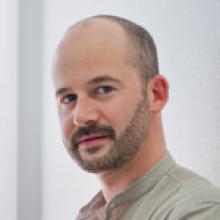
Directeur de recherche
CNRS

Maître de conférences
UCBL
Tel: 04 72 43 35 83
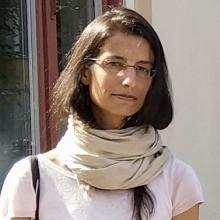
Chargée de recherche
CNRS
Tel: 04 72 44 81 42
Doctorant
CNRS
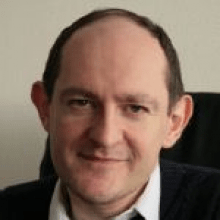
Directeur de recherche
CNRS
Tel: 33 04 72 44 62 96

Chargée de recherche
CNRS
Tel: 04 72 43 26 28
Doctorant
UCBL
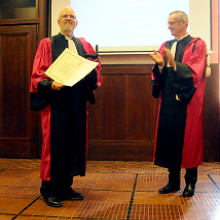
Chercheur invité
UCBL
Our group focuses on two main axes: phylogenomics (i.e. the inference of evolutionary history based on genomics data) and evolutionary genomics (understanding the molecular and population processes that drive genome evolution). We see genomes both as a subject of research (how do genomes evolve, why are they structured the way they are?), but also as a main source of empirical knowledge about the macroevolutionary patterns (what do they tell us about the history of life on Earth?), or about the phenotypes and life-history strategies of organisms. Our works heavily rely on methodological developments (bioinformatics, modeling and statistical inference).
Evolution of genome architecture and expression
Genomes are the result of a long-term evolutionary process, shaped by multiple evolutionary forces. Some genomic features are adaptive (i.e. are beneficial for the fitness of organisms), others result from non-adaptive processes (random drift and biased gene conversion - BGC) or are caused by conflicts between multiple levels of selection (e.g. meiotic drive or the spread of selfish genetic elements). We explore different aspects of genome architecture (base composition landscapes, genome structure and size, impact of transposable elements, …) or functioning (gene expression, lncRNAs, epigenetic landscapes, …), and try to disentangle the relative contribution of adaptive and non-adaptive processes to their evolution. For this purpose, we consider both the molecular mechanisms (mutation, repair, recombination) and the population processes (selection, drift, BGC, …) that shape genetic variation.
Phylogenomics
We are interested in reconstructing the history of life on Earth. This research unfolds along several axes. First, we develop phylogenomic databases of aligned genetic sequences (e.g. BIBI, RiboDB or HOGENOM). Second, we conduct methodological research on how to accurately reconstruct deep phylogenies, infer divergence times, reconstruct ancestral genetic sequences, gene repertoires and life-history traits. This methodological work is translated into publicly available software programs (e.g. SeaView, PhyloBayes, Coevol). Finally, we apply these approaches to several important problems, among which: reconstructing the phylogeny of animals, of archaea, or the global tree of life; using phylogenies and ancestral gene repertoires to investigate the evolution of complex systems and the emergence of molecular and cellular functions in the three domains of life; reconstructing ancestral genetic sequences, a research activity that has industrial and biotechnological applications.
Teaching and outreach
We teach at University Lyon 1 (Master Bioinfo@Lyon), INSA, ENS Lyon, we organize bioinformatics internships. We regularly give conferences on evolution (tree of life, human evolution, genetic diversity, …).
Prospective students and postdocs are invited to apply, as we often welcome visitors for internships or research projects.
Keywords: Molecular evolution and Population Genomics; Phylogenomics; Computational Genomics; Comparative genomics; Bioinformatics; Statistical inference.
Publications
Display of 961 to 990 publications on 1109 in total
New insulin-like proteins with atypical disulfide bond pattern characterized in Caenorhabditis elegans by comparative sequence analysis and homology modeling
Genome Research . 8 : 348-353
Journal article
see the publicationHighly conserved RNA sequences that are sensors of environmental stress
Molecular and Cellular Biology . 18 : 7371-7382
Journal article
see the publicationSensitivity of the relative-rate test to taxonomic sampling
Molecular Biology and Evolution . 15 ( 9 ) : 1091-1098
Journal article
see the publicationMicrosporidia amitochondrial protists possess a 70-kDa heat shock protein gene of mitochondrial evolutionary origin
Molecular Biology and Evolution . 15 : 683-689
Journal article
see the publicationSaccharomyces boulardii Fungemia in a Patient Receiving Ultra‐levure Therapy
Clinical Infectious Diseases . 27 ( 1 ) : 222-223
DOI: 10.1086/517685
Journal article
see the publicationMolecular diversity of rhizobia occurring on native shrubby legumes in southeastern Australia
Applied and Environmental Microbiology . 64 ( 10 ) : 3989-97
Journal article
see the publicationWhat is the state of the art in molecular systematics of marine Porifera ?
Hydrobiologia .
Conference paper
see the publicationThe non-redundant Bacillus subtilis (NRSub) database: update 1998
Nucleic Acids Research . 26 ( 1 ) : 60-62
DOI: 10.1093/nar/26.1.60
Journal article
see the publicationMultiple sequence alignment with Clustal X
Trends in Biochemical Sciences . 23 ( 10 ) : 403-405
Journal article
see the publicationInferring pattern and process: maximum-likelihood implementation of a nonhomogeneous model of DNA sequence evolution for phylogenetic analysis
Molecular Biology and Evolution . 15 ( 7 ) : 871-879
Journal article
see the publicationMicrosporidian Encephalitozoon cuniculi a unicellular eukaryote with an unusual chromosomal dispersion of ribosomal genes and a LSU rRNA reduced to the universal core
Nucleic Acids Research . 26 : 3513-3520
Journal article
see the publicationPhylogenetic analysis and genome size of Ostreococcus tauri (Chlorophyta Prasinophyceae)
Journal of Phycology . 34 : 844-849
Journal article
see the publicationModel of the influence of time and mild temperature on Listeria monocytogenes nonlinear survival curves
International Journal of Food Microbiology . 40 : 185-195
Journal article
see the publicationNEURAL NETWORKS AS AN ALTERNATIVE METHOD FOR PREDICTING BACTERIAL GROWTH RATE FROM THE BEGINNING OF A GROWTH CURVE
Industrial Applications of Neural Networks . : 451-457
Book chapter
see the publicationSearching for regulatory elements in human noncoding sequences
Current Opinion in Structural Biology . 7 : 399-406
Journal article
see the publicationThe NRSub database: update 1997
Nucleic Acids Research . 25 : 53-56
Journal article
see the publicationExtreme differences in rates of molecular evolution of foraminifera revealed by comparison of ribosomal DNA sequences and the fossil record
Molecular Biology and Evolution . 14 ( 5 ) : 498-505
Journal article
see the publicationInfluence of atmospheric conditions during incubation on the susceptibilities of Streptococcus pneumoniae isolates to five beta- lactam antibiotics
Journal of Antimicrobial Chemotherapy . 40 ( 4 ) : 599-601
DOI: 10.1093/jac/40.4.599
Journal article
see the publicationSimple relationship between acid dissociation constant and minimal pH for microbial growth in laboratory medium
International Journal of Food Microbiology . 35 ( 1 ) : 75-81
Journal article
see the publicationEvolutionary affinities of the order Perissodactyla and the phylogenetic status of the superordinal taxa Ungulata and Altungulata
Molecular Phylogenetics and Evolution . 7 ( 2 ) : 195-200
Journal article
see the publicationCloning of the mouse BTG3 gene and definition of a new gene family (the BTG family) involved in the negative control of the cell cycle
Leukemia . 11 ( 3 ) : 370-375
Journal article
see the publicationCloning and characterization of a gene encoding a novel immunodominant antigen of Trypanosoma cruzi
Molecular and Biochemical Parasitology . 87 : 193-204
Journal article
see the publicationEvolutionary distances between nucleotide sequences based on the distribution of substitution rates among sites as estimated by parsimony
Molecular Biology and Evolution . 14 ( 3 ) : 287-298
Journal article
see the publicationReappraisal of the effect of temperature on the growth kinetics of Aeromonas salmonicida
Letters in Applied Microbiology . 25 : 363-366
Journal article
see the publicationA model describing the relationship between lag time and mild temperature increase duration
International Journal of Food Microbiology . 38 : 157-167
Journal article
see the publicationHomogeneous Two-Site Immunometric Assay Kinetics as a Theoretical Tool for Data Analysis
Analytical Biochemistry . 251 ( 1 ) : 79-88
Journal article
see the publicationA Descriptive Model for the Kinetics of a Homogeneous Fluorometric Immunoassay
Journal of Immunoassay and Immunochemistry . 18 ( 1 ) : 21-47
Journal article
see the publicationCytological investigations with regard to population dynamics of pine sawfly, Diprion pini L. (Hym.: Diprionidae)
Population dynamics, impacts, and integrated management of forest defoliating insects . ( 247 )
Conference paper
see the publicationThe particular behaviour of Listeria monocytogenes under sub-optimal conditions
International Journal of Food Microbiology . 29 ( 2-3 ) : 201-211
Journal article
see the publicationPhylogenetic position of the order Lagomorpha (rabbits hares and allies)
Nature . 379 : 333-335
DOI: 10.1038/379333a0
Journal article
see the publication
